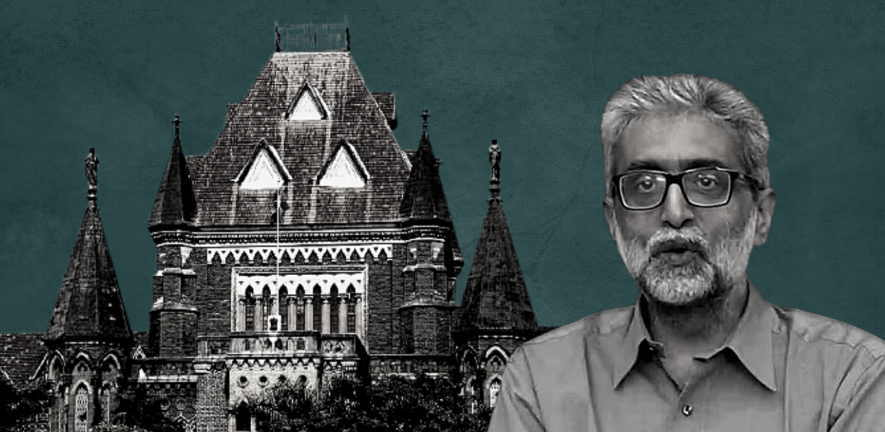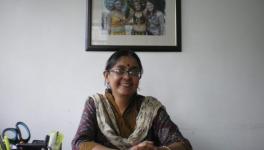Pen Mightier Than Sword but Won’t Strike Terror: Gautam Navlakha’s Counsel to Bombay HC on Bail Plea

ON Wednesday, a division bench of the Bombay High Court, comprising Justices A.S. Gadkari and P.D. Naik, continued hearing the regular bail application of Gautam Navlakha. Journalist and human rights activist Navlakha, an accused in the Bhima Koregaon-Elgar Parishad Maoist links/criminal conspiracy case, is charged under the Unlawful Activities (Prevention) Act, 1967 (UAPA).
On November 10, 2022, the Supreme Court had allowed Navlakha to be placed under house arrest.
Advocate Yug Mohit Chaudhary, appearing for Navlakha, argued that there is no evidence that there has been any act of violence, or the planning of any act of violence or of use of any arms or ammunition by Navlakha. He stressed that for Navlakha to be liable under Section 121 (waging, or attempting to wage war, or abetting waging of war, against the Government of India) of the Indian Penal Code, there has to be an act of violence or a plan to commit an act of violence or some material to proceed with that act of violence.
Highlighting the definition of a ‘terrorist act’ under Section 15 of the UAPA, Chaudhary pointed out that it provides that the act has to strike terror by use of certain materials, which is, thus, done with some pretext causing some effect with some instrument. Chaudhry submitted that the act, intent, means and effect are important to strike terror, and not pen and paper. “Pen is mightier than the sword but won’t strike terror,” he submitted.
According to Chaudhary, in the chargesheet filed against Navlakha, there is no evidence of any ‘terrorist act’ under Section 15 of the UAPA or any connection between Navlakha and the terrorist acts alleged against him. “If you (the National Investigation Agency) are going to say there has been a terrorist act, at least tell which terrorist act it is,” he asked.
Chaudhary submitted that according to the prosecution, for secrecy and to protect their affairs, Maoists do not use real names of those involved, but code names. He pointed out that the letters on which the prosecution relied, however, refer to Navlakha by his full name, ‘Gautam Navlakha’, in all the places in such letters. He also pointed out that the name of a member of the highest ranking committee of the Maoist Party, the Central Committee, is mentioned as ‘Gautam’, which is insufficient to draw a link to Navlakha, inconsistent with the practice of Maoists to not use real names, and inadequate to imply the involvement of Navlakha in any terrorist act.
Further, Chaudhary contended that over 90 per cent of the evidence relied on by the prosecution, consisting of letters and documents, in the case pertains to electronic evidence seized from various digital devices of other co-accused persons. According to the Supreme Court, Chaudhary stated, whenever electronic evidence is relied upon by the prosecution, it has to furnish a clone copy to the accused, in compliance with Section 207 (supply to the accused a copy of police report and other documents.) of the Code of Criminal Procedure.
Chaudhary emphasised that Navlakha’s computer was seized on August 28, 2018, four-and-a-half years ago, and till date, he has not been provided a clone copy of the computer records.
Background
Navlakha was arrested on August 28, 2018, for his alleged involvement in the Elgar Parishad–Maoists links case. While he was initially kept under house arrest, he was subsequently sent to judicial custody in April 2020. During his custody as an undertrial prisoner, a chargesheet was filed on October 9, 2020; charges are yet to be filed by court.
In May 2021, the Supreme Court rejected Navlakha’s default bail on the ground that the 35 days he spent under house arrest in 2018 did not constitute custody in order to compute the 90-day period within which a chargesheet must be filed under criminal law, to entitle him to bail.
On October 12, 2021, Navlakha was shifted to the ‘anda circle’ (high-security zone) from the barracks at Taloja, further deteriorating his health, as claimed by his partner, Sahba Hussain.
On April 26 last year, the Bombay High Court dismissed Navlakha’s petition that sought his transfer from the Taloja jail in Navi Mumbai to house arrest. On May 23, Navlakha approached the National Investigation Agency (NIA) to be provided with a mosquito net, which he was previously allowed but which was subsequently taken away by the prison authorities. Earlier, prison authorities had refused his request for a new pair of spectacles, which were given only after media and legal intervention.
The Maharashtra prison authority has also barred Navlakha from availing telephonic communication facilities in Taloja, as per a circular signed by the state’s Inspector General of Police that provides that undertrial prisoners booked under charges of terrorism or other ‘serious charges’ cannot make telephone calls from the prison.
On November 10 last year, the Supreme Court allowed Navlakha to be placed under house arrest for a period of one month under certain restrictions. On November 19, after hearing and incorporating further concerns of the NIA, the bench dismissed the petition filed by the NIA to vacate the order granting house arrest and directed the house arrest order to be implemented within 24 hours of its pronouncement.
Since then, his house arrest has been periodically extended by the court.
The prosecution in the case has filed a chargesheet exceeding 5,000 pages and intends to cross-examine at least 200 witnesses. Thirteen of the 16 accused persons are presently incarcerated, having now spent between two to almost five years in judicial custody without trial. Another accused, tribal rights activist and Jesuit priest Fr. Stan Swamy, passed away in judicial custody in July 2021 after contracting COVID-19 in prison while awaiting bail on medical grounds.
Get the latest reports & analysis with people's perspective on Protests, movements & deep analytical videos, discussions of the current affairs in your Telegram app. Subscribe to NewsClick's Telegram channel & get Real-Time updates on stories, as they get published on our website.























